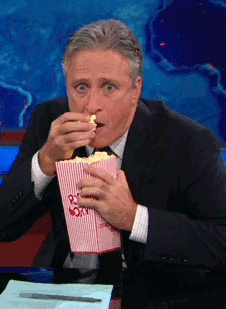I see, then the little 16 megapixel compact camera will beat all of them?
Pixels only attempt to reproduce the lens image, hopefully well. The way to bet is a large sharp lens image.
It's pixel pitch Wayne not Mpix. Pixel size/surface area.
I see, then the little 16 megapixel compact camera will beat all of them?
Pixels only attempt to reproduce the lens image, hopefully well. The way to bet is a large sharp lens image.
It's pixel pitch Wayne not Mpix. Pixel size/surface area.
Yeah, so? What's the pixel pitch of 16 megapixels on a 1/2.3" 6.30 x 4.72 mm sensor?(Nikon, Canon, etc).
That's not much more than 1/4 the DX area, so it's really high resolution, right? At least pixel pitch implies it, so it ought to sample really well, right? But samples what? It samples a really small image, that has to be greatly enlarged.Enlargement directly reduces resolution (among other issues).
If Mike takes a shot with his P610 and I take one with my D810 and we both use a 300mm, do you think I can match his quality when having to crop/enlarge my shot to match his birdshot?
Come on J-see, I'm disappointed to be in this nonsense with you. All those buying FX sure are going to get a surprise to learn they should have bought a compact.
I don't know where this bird is, but you're saying that if you use the wrong choice lens for some cases, your camera may not do well. That is only evidence of your inability to deal with it, not evidence that a compact has more quality and capability than a D810. That's outright nonsense. I know you know that, so it is even worse nonsense. Why do you do that?
P610 is a 258 mm lens instead of 300mm.
The compact crop factor is 5.6, so are you actually claiming your D810 is useless without the equivalent 1440 mm lens?
Don't you have the 150-600mm? Try it, it should be hard to beat on a D810.
So for your example, but with the 600mm, that's 600/258 = 2.3x more focal length, compared to a little sensor (17% size) needing 5.6x more enlargement to view same size.
Some numbers... Say the bird is at 100 feet.
Field of view of FX at 100 feet with 600 mm is 6 x 4 feet.
Field of view of compact with 258mm is 2.44 x 1.83 feet.
So your bird is 41% size (but there is more to be understood). The compact has to enlarge it 560% more than you (to view it same size). Think again, who do you imagine wins that?
Pixels determine sampling resolution to reproduce the lens image well.
Pixels also determine printing resolution to make ink dots to reproduce the image well.
We do need sufficient pixels for the print size, but that is just a boundary condition (meaning more than enough won't help. And we can print smaller, or at less then 300 dpi.) Same as we need sufficient pixels to sample the lens image adequately.
But pixels do not create any image detail, the lens does all of that.
What all steps are reproducing digitally is the resolution of the lens image detail projected onto the sensor. And it requires enlargement to see it, which reduces that lens resolution when we see it (for example, 4x enlargement is 1/4 the detail level ... the resolved lines per inch are 4x wider apart.)
So starting with a large image needing less enlargement is the way to bet. It's always been true. Ansel Adams favored 8x10 inch film.
Factors like resolution in depth of field are about enlargement. Pixels are not mentioned.
If I'm not mistaken I replied to the comment about FX cropping to DX size and the sharpness/detail difference between both. It is about pixel pitch/surface area since the analog signal is directly translated into pixels and when the ability to resolve detail is identical (same lens, same distance), the smaller pixels translate into more detail. When we start to crop and match the images, depending which cam we use, we will start to see differences in quality.
Enlargement does not occur until we stretch the pixels when taking the same shot. That's beyond 100%.
Why the nonsense about compacts and birds then?
On a computer screen the DX image has no metric dimensions, same with the FX. If we'd display it at its true dimensions on screen, the FX shot would be much larger since it has more irrelevant data for this comparison.

Blahblahblah
Wayne, seeing your brain in action is like observing a fat man swim across the Channel. It's boring fast.
@J-see. I like and respect you as a photographer, but the personal attacks are unnecessary and inappropriate.
It's not personal attack; it's an observation.
Who talks about physical screen size as a measurement for image size when everyone knows the size of that image on your screen is defined by resolution. Pixels times pixels.
Again, what is the relevance of this when we (at least I) talk about taking a shot with a smaller sensor but higher pixel density vs a bigger sensor with lower pixel density cropped to the same level as the smaller?
It doesn't matter at all how big we display them or what the initial sensor dimensions were when we compare both shots.
